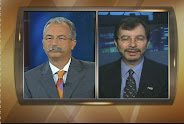

Throughout the nearly five-year bull market, the technical support beams for higher highs have remained solidly intact. No major market top, no major divergences, and moving averages trending nicely to the upside. There is, however, an issue of concern that has emerged recently that bears noting: applying the Moving Averages principle, the Dow Transports is flirting with a trend change signal that has overall market implications.
First, a refresher re the Moving Averages principle:
As noted on August 2nd, “When the 200-day (moving average) slope is set (up or down), the current price and the 50 day tends to lead in that direction (above or below). In other words, a mega trend contains two elements: the current price and the 50-day moving average must lead the 200-day and the slope of the 200-day must point in a clearly defined direction.
A preliminary warning signal to a mega trend occurs when the current price crosses the 200-day. A slightly more significant warning signal occurs when the 50-day crosses the 200-day. BUT, it is only when both current price and 50-day cross the 200-day AND the 200-day changes direction that the existing mega trend can be considered over.
Now, let’s take a look at the two charts above*.
The first chart shows the Dow Transports over the past five years. What is clear is the fact that by adhering to the Moving Averages principle an investor would have stayed long the Transports and, presumably, the market as a whole. For, at no time did the Transports violate the Moving Averages principle noted above. That is, until now.
As can be seen more clearly in the second year-to-date chart, the underlined points noted in the above Moving Averages principle have occurred. Price is below the moving averages, the 50 day has crossed the 200 day, and both the 50 and 200 day are now downwardly sloped. Now, here is where a little judgment (and history) must come into play.
Given the fact that the magnitude of the above trend change points noted are at the earliest of stages, the potential for a whipsaw cannot be ruled out. For, when it comes to more cyclically oriented sectors (the Transports being such a sector), whipsaw moves are more common than in less cyclically sensitive sectors (or in a broader index such as the S&P 500).
Investment Strategy Implications
The primary point of drawing your attention to the potential trend change in the Dow Transports is that it suggests a certain fraying of the market’s broad technical strength. For example, over the past months, the technical readings for several economic sectors (Financials, Consumer Discretionary, and Healthcare) have either turned negative or are close to doing so. In other words, the Transports recent market action is an early warning sign that should be ignored.
As stated several times before, it’s a bull market ‘til it ain’t. However, as any prudent investment miner knows, if the canary stops singing, it’s time to stop the digging.
*To view a larger version of the charts, click on the image.








































